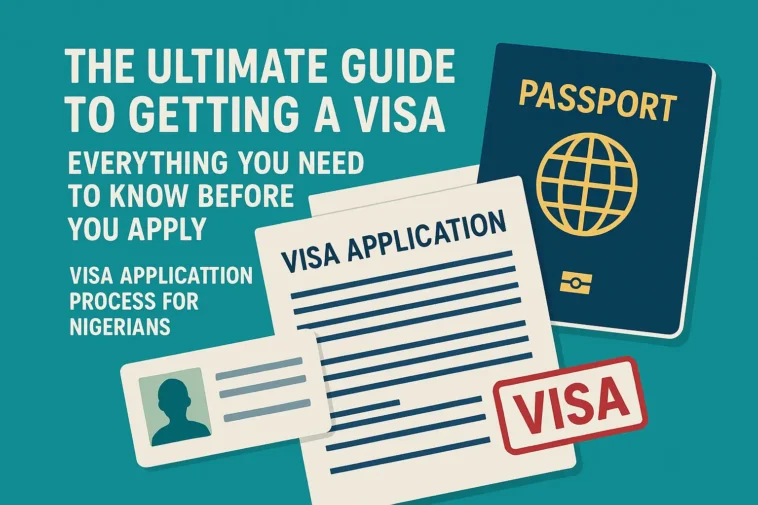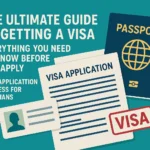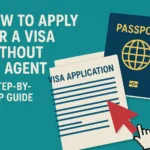Outline:
- Introduction: The Pain of Visa Rejection
- Why visa applications get rejected
- Importance of avoiding common mistakes
- Mistake #1: Incomplete or Incorrect Application Forms
- Filling out the wrong information
- Missing mandatory fields
- How to double-check before submission
- Mistake #2: Insufficient or Incorrect Financial Proof
- Why embassies require proof of funds
- Minimum financial requirements for different visas
- Common financial document mistakes
- Mistake #3: Lack of Travel History
- Why previous travel matters
- How first-time travelers can improve their chances
- Mistake #4: Submitting Fake or Altered Documents
- Why people fake documents and why it’s a terrible idea
- How embassies verify documents
- The consequences of document fraud
- Mistake #5: Poor Visa Interview Preparation
- Common interview questions
- What officers look for in your responses
- How to stay calm and answer confidently
- Mistake #6: Weak Ties to Home Country
- Why embassies want proof that you will return
- Documents that help prove strong home ties
- How to demonstrate strong personal and professional connections
- Mistake #7: Applying for the Wrong Visa Type
- Difference between tourist, business, student, and work visas
- Why choosing the wrong category can get you denied
- How to determine the right visa type
- Mistake #8: Providing Conflicting Information
- How inconsistencies in forms, interviews, and documents lead to rejection
- Tips for ensuring uniformity across all information
- Mistake #9: Applying Too Late or Too Early
- Understanding the best time to apply for a visa
- Common mistakes with last-minute applications
- How early application improves success chances
- Mistake #10: Ignoring Visa-Specific Requirements
- Country-specific document rules
- Special conditions for work, student, and transit visas
- Where to find the most accurate visa guidelines
- Conclusion: How to Ensure a Smooth Visa Application
- Final checklist before submitting an application
- Encouragement to stay informed and avoid shortcuts
Introduction: The Pain of Visa Rejection
Applying for a visa is stressful enough, but getting a rejection can be heartbreaking, especially when you’ve invested time, money, and effort. Many people get rejected not because they don’t qualify, but because of simple mistakes that could have been avoided. This guide highlights the ten most common visa application mistakes and how to avoid them, so you can increase your chances of approval.
Mistake #1: Incomplete or Incorrect Application Forms
One of the biggest reasons visas get rejected is incomplete or incorrectly filled forms. Many applicants rush through their visa application without carefully reviewing the details. Here’s how to avoid this mistake:
- Double-check every entry before submission.
- Ensure your personal details match those in your passport.
- Read instructions carefully and don’t leave mandatory fields blank.
Mistake #2: Insufficient or Incorrect Financial Proof
Visa officers want to ensure you have enough money to support yourself during your stay. Common mistakes include:
- Submitting bank statements that are too recent or outdated.
- Having insufficient funds for the required duration of stay.
- Failing to provide supporting documents like employment letters or sponsor letters.
Mistake #3: Lack of Travel History
First-time travelers often face difficulties getting a visa. Many countries prefer applicants with a history of international travel. If you’re a first-time traveler, here’s what you can do:
- Start with easier-to-obtain visas (e.g., nearby African countries).
- Apply for visas with strong travel plans and return guarantees.
Mistake #4: Submitting Fake or Altered Documents
Some applicants try to present fake documents, but embassies have ways to verify authenticity. Using forged documents can lead to a permanent ban from getting a visa. Instead:
- Always submit real and verifiable documents.
- If you lack a required document, find an alternative instead of forging one.
Mistake #5: Poor Visa Interview Preparation
Many visa applications require an interview, and nervous or unprepared applicants often fail. To improve your chances:
- Research common questions and practice answers.
- Be confident and provide consistent responses.
- Dress appropriately and remain professional during the interview.
Mistake #6: Weak Ties to Home Country
Embassies want assurance that you’ll return home after your trip. Applicants who fail to prove strong home ties often get rejected. Strengthen your application by:
- Providing evidence of employment or business ownership.
- Showing strong family connections (e.g., marriage certificates, dependent children).
- Presenting property ownership or long-term investments.
Mistake #7: Applying for the Wrong Visa Type
Choosing the wrong visa category can lead to immediate rejection. For example, applying for a tourist visa when your real purpose is work or study can be flagged as misleading.
- Carefully read the visa categories before applying.
- Seek embassy clarification if unsure.
Mistake #8: Providing Conflicting Information
If the details in your application form, interview answers, and supporting documents don’t match, it can lead to suspicion. To prevent this:
- Ensure all names, addresses, and travel dates are consistent.
- Avoid contradictions between verbal and written statements.
Mistake #9: Applying Too Late or Too Early
Timing is crucial when applying for a visa. Common mistakes include:
- Applying too late and missing travel plans.
- Applying too early when documents like financial statements may become outdated by the time of travel.
Check the recommended application timeline for your destination and plan accordingly.
Mistake #10: Ignoring Visa-Specific Requirements
Each country has unique visa requirements, and failure to meet them can result in rejection. Examples include:
- Some countries require specific vaccinations.
- Some demand an official invitation letter from a resident.
Before applying, always read the official embassy website to understand the country’s specific requirements.
Conclusion: How to Ensure a Smooth Visa Application
Avoiding these ten mistakes can significantly improve your chances of getting a visa approval. Before submitting your application, take time to:
- Review all forms and documents carefully.
- Follow embassy guidelines strictly.
- Seek professional help if needed.
With proper preparation, patience, and honesty, you can navigate the visa application process with confidence and increase your chances of a successful outcome.





